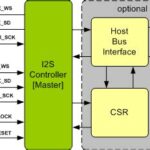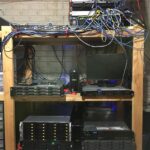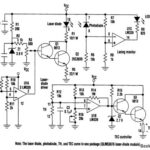Introduction to LoPy
LoPy is a powerful and versatile IoT development board that combines the best of both worlds: the ease of use of Python programming and the low power consumption of the LoRa Technology. Developed by PyCom, LoPy is designed to enable developers to quickly create and deploy IoT applications with minimal effort and cost.
What is LoPy?
LoPy is a small, credit-card sized development board that features a dual processor architecture, consisting of an ESP32 microcontroller and a Semtech SX1276 LoRa transceiver. This combination allows LoPy to support multiple wireless protocols, including Wi-Fi, Bluetooth, and LoRa, making it suitable for a wide range of IoT applications.
Key Features of LoPy
- Dual processor architecture (ESP32 + SX1276)
- Support for multiple wireless protocols (Wi-Fi, Bluetooth, LoRa)
- Ultra-low power consumption
- Python programming language support
- Expandable with various peripherals and sensors
- Over-the-air (OTA) updates
- Integrated antenna and u.FL connector for external antenna
- Compatible with PyCom’s Pymakr IDE and Pybytes IoT platform
Hardware Specifications
Microcontroller and LoRa Transceiver
LoPy is powered by an ESP32 microcontroller, which features a dual-core Xtensa LX6 processor running at up to 240 MHz. The ESP32 provides ample processing power for IoT applications while maintaining low power consumption. The Semtech SX1276 LoRa transceiver enables long-range, low-power wireless communication, making LoPy suitable for applications that require extended coverage.
| Component | Specification |
|---|---|
| Microcontroller | ESP32 dual-core Xtensa LX6 (up to 240 MHz) |
| LoRa Transceiver | Semtech SX1276 |
| RAM | 512 KB |
| Flash | 4 MB |
| GPIO | 24 pins |
| ADC | 8-channel, 12-bit |
| DAC | 2-channel, 8-bit |
Wireless Connectivity
LoPy supports multiple wireless protocols, allowing developers to choose the most suitable option for their application. The following table summarizes the wireless capabilities of LoPy:
| Protocol | Frequency | Data Rate | Range |
|---|---|---|---|
| Wi-Fi | 2.4 GHz | up to 150 Mbps | up to 100 m |
| Bluetooth | 2.4 GHz | up to 1 Mbps | up to 50 m |
| LoRa | 868/915 MHz | up to 37.5 kbps | up to 40 km |
Power Management
LoPy is designed for ultra-low power consumption, making it ideal for battery-powered IoT applications. The board features a highly efficient power management system that allows it to operate in various power modes, including:
- Active mode: Full functionality, highest power consumption
- Sleep mode: CPU and peripherals disabled, lowest power consumption
- Deep sleep mode: Only RTC and external interrupts enabled, ultra-low power consumption
The following table provides an overview of LoPy’s power consumption in different modes:
| Mode | Power Consumption |
|---|---|
| Active | 100 mA |
| Sleep | 25 mA |
| Deep Sleep | 10 μA |
Software and Development
Python Programming Language
LoPy supports Python programming language, which is known for its simplicity, readability, and extensive library support. PyCom provides a custom MicroPython firmware for LoPy, which includes various libraries and modules specifically designed for IoT applications.
Some of the key libraries and modules include:
machine: Low-level hardware controlnetwork: Wireless connectivity (Wi-Fi, Bluetooth, LoRa)pycom: PyCom-specific functions and constantsutime: Time-related functionsujson: JSON encoding and decodingubinascii: Binary-to-ASCII conversions
Pymakr IDE and Pybytes IoT Platform
PyCom provides a comprehensive development ecosystem for LoPy, which includes the Pymakr IDE and the Pybytes IoT platform.
Pymakr IDE is a cross-platform, feature-rich IDE that simplifies the development process for LoPy. It offers a range of features, such as:
- Syntax highlighting and code completion for Python
- Built-in terminal for REPL (Read-Eval-Print Loop) interaction
- Project management and file explorer
- Code uploading and debugging
- Integration with Pybytes IoT platform
Pybytes is a cloud-based IoT platform that enables developers to manage, monitor, and update their LoPy devices remotely. It provides a user-friendly web interface for device management, data visualization, and over-the-air (OTA) firmware updates.

Applications and Use Cases
LoPy’s versatility and low power consumption make it suitable for a wide range of IoT applications, such as:
- Smart agriculture: Monitoring soil moisture, temperature, and humidity for precision farming
- Environmental monitoring: Measuring air quality, noise levels, and weather conditions
- Asset tracking: Tracking the location and status of valuable assets in real-time
- Smart cities: Implementing intelligent lighting, parking, and waste management solutions
- Industrial automation: Monitoring and controlling industrial processes and equipment
Getting Started with LoPy
To get started with LoPy, you will need the following:
- LoPy development board
- USB cable for programming and power
- Computer with Pymakr IDE installed
- Pybytes account (optional, for remote device management)
Setting up the Development Environment
- Install Pymakr IDE on your computer (available for Windows, macOS, and Linux)
- Connect the LoPy board to your computer using the USB cable
- Open Pymakr IDE and create a new project
- Select the LoPy board from the list of available devices
- Write your Python code and upload it to the LoPy board
Example Code: Blinking LED
Here’s a simple example code that blinks the built-in LED on the LoPy board:
import pycom
import time
pycom.heartbeat(False) # Disable the default heartbeat LED
while True:
pycom.rgbled(0xFF0000) # Red
time.sleep(1)
pycom.rgbled(0x00FF00) # Green
time.sleep(1)
pycom.rgbled(0x0000FF) # Blue
time.sleep(1)
This code uses the pycom module to control the RGB LED on the LoPy board. The heartbeat() function is used to disable the default heartbeat LED, and the rgbled() function is used to set the color of the LED. The time.sleep() function is used to introduce a delay between each color change.
Frequently Asked Questions (FAQ)
-
What is the difference between LoPy and other IoT development boards?
LoPy stands out from other IoT development boards due to its dual processor architecture, support for multiple wireless protocols (including LoRa), and ultra-low power consumption. It also offers a user-friendly development ecosystem with the Pymakr IDE and Pybytes IoT platform. -
Can I use LoPy for commercial IoT projects?
Yes, LoPy is suitable for both prototyping and commercial IoT projects. Its low power consumption, long-range wireless capabilities, and easy programmability make it an attractive choice for various industries and applications. -
Is LoPy compatible with other programming languages besides Python?
LoPy is primarily designed to work with Python (MicroPython) programming language. However, experienced developers can also use C/C++ to write low-level code and integrate it with the Python codebase. -
How long does the battery last on a LoPy-based IoT device?
The battery life of a LoPy-based IoT device depends on various factors, such as the power consumption of the connected sensors, the wireless protocol used, and the frequency of data transmission. In general, LoPy’s ultra-low power consumption enables long battery life, ranging from weeks to months, depending on the application. -
Where can I find more resources and support for LoPy development?
PyCom provides extensive documentation, tutorials, and examples on their website (https://docs.pycom.io/). Additionally, there is a vibrant community of LoPy developers on the PyCom forum (https://forum.pycom.io/), where you can ask questions, share knowledge, and collaborate with other developers.
Conclusion
LoPy is a powerful and versatile IoT development board that combines the ease of use of Python programming with the long-range, low-power capabilities of LoRa technology. Its dual processor architecture, support for multiple wireless protocols, and ultra-low power consumption make it suitable for a wide range of IoT applications, from smart agriculture to industrial automation.
With the Pymakr IDE and Pybytes IoT platform, developers can quickly create, deploy, and manage their LoPy-based IoT projects with minimal effort and cost. As the IoT landscape continues to evolve, LoPy is well-positioned to be a key player in enabling the next generation of connected devices and solutions.






Leave a Reply